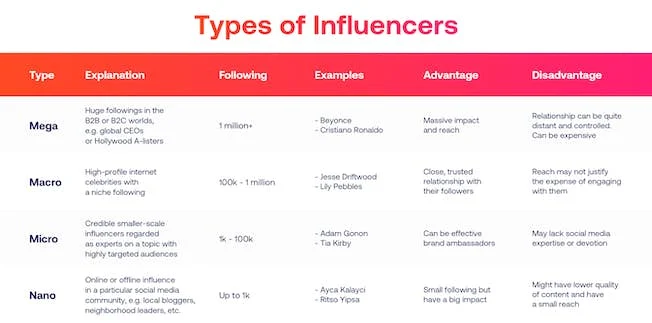Collaboration is key for marketers and creative professionals. Whether it’s your internal team, contractors, or outside influencers you’re engaging with, a shared understanding of your brand ensures that everyone is on the same page. That’s why creating comprehensive branding guidelines with a clear brand style guide is so important for effective collaboration.
Brand guidelines are documents that define how your company should communicate with customers and partners. They hold significant value because they give members of your team—whether permanent employees or freelancers—a clear framework for designing content that reflects your brand values and aesthetic.
In this article, we’ll explore how brand guidelines enhance collaboration and productivity, and give you tips for creating successful guidelines. You’ll learn:
- How brand guidelines help businesses achieve brand consistency
- The role brand guidelines play in onboarding new creatives
- How to use brand guidelines to set boundaries for creatives
- Why brand guidelines should always be comprehensive and up to date
- How brand templates and creative automation work with your guidelines to increase productivity and reduce cost
What Is a Brand Guideline?
A brand guideline is a set of standards and rules used to maintain consistency across all elements of a company’s branding. It specifies the usage of colors, fonts, logo design, tone, voice, imagery styles, and other creative aspects that are associated with a brand. Having these guidelines in place ensures that the company maintains an image that is cohesive and recognizable within its industry.
A brand style guide act as a framework for creativity by providing boundaries for how the company should be represented. This allows teams to work within those parameters while still being able to express their own ideas effectively. Having clearly defined rules makes it easier for creative team members to understand what they can and can’t do when creating marketing materials.
Having well-defined brand style guide is essential for any organization looking to make an impact in today’s competitive market. It helps standardize messaging, visuals, and design, allowing creatives to express company values in a meaningful way without compromising consistency or clarity.
How Brand Guidelines Support Collaboration
When it comes to fostering collaboration, brand guidelines can be an invaluable aid in setting the creative parameters essential for cooperative and efficient teamwork.
Achieve Brand Consistency with a Diverse Creative Team
Guidelines provide clear language, rules, and imagery that all team members can easily reference when creating visuals and content. With everyone working in harmony, your brand benefits from greater efficiencies in communication and quicker production times on projects requiring input from multiple parties.
Quickly Onboard New Marketing Creative Hires
Comprehensive rules in your brand style guide ensure that new hires immediately understand what is expected of them. When developing brand-related campaigns or artwork, they can look to established style choices and techniques for guidance. Brand guidelines help experienced creatives hit the ground running, empowering team leaders to quickly and confidently scale their teams to meet workload demands.
Communicate Your Brand’s Unique Style to Freelancers
Clear guidelines foster clear communication between internal teams and external freelance creatives. They eliminate guesswork and provide creative freedom within the scope of what defines the company’s look and feel. Not only does that mean everyone involved with creating materials is aligned, but it also helps build trust between freelancers, internal teams, and clients.
Make Sure Your Team Isn’t Reinventing the Wheel
This guidance is meant to provide a framework on which creative teams can base their work. In doing so, they don’t have to start from scratch every time they launch a new project or campaign because the foundations are already in place. Instead of recreating established rules, brand guidelines allow your team to devote more time to creating unique content.
Set Boundaries for Influencer Marketing and Brand Collaboration
Modern marketing teams collaborate with organizations and individuals outside of the traditional employee or contractor relationship, including independent creators, influencers, affiliates, and other brand partners. These partnerships can help you achieve your branding and marketing objectives, but they need clear boundaries to guard against harmful misuse of brand assets and messaging. Brand guidelines communicate your brand’s requirements and boundaries, setting expectations that shape relationships with external collaborators.
The Digital Marketing Institute outlines an essential guide to influencer marketing that can help provide even more context. Identifying the types of influencers, you would work with, if any, can help clarify marketing activities moving forward.

Building Brand Guidelines for Effective Collaboration
We’ve talked about why you should use a brand guide to cultivate collaboration, but not all are created equal. Poor-quality guidelines confuse, undermine, and mislead creative professionals. Plus, bad guidelines almost always result in expensive rework.
To learn more about what goes into creating effective brand guidelines, check out 12 examples of great brand guidelines and how to create a corporate identity design. To conclude this article, we’ll look at three tips to help you create brand guidelines that maximize your team’s productive potential.
Create Comprehensive Guidelines
If creative team members can’t find the information they need, they may not be able to proceed. Or they’ll devise a solution that may not conform to the brand’s identity, values, and standards. Either way, productivity takes a hit.
Creatives should ideally be able to refer to a brand’s guidelines whenever they have a question about brand values, visual styles, colors, logo use, and so on. Try to anticipate and include information to answer any questions that designers and marketers may have.
Keep Brand Guidelines Up to Date
It is essential to ensure that your brand style guide is up to date. Outdated guidelines can lead to a loss of unity and coherence among the many elements of a brand’s identity, from design language and visuals to messaging. Without an effective set of current brand guidelines in place, it can be difficult for teams to stay on message and create content with consistency across multiple channels.
Take Advantage of Brand Templates and Creative Automation Tools
Although brand guidelines are useful documents for creative teams and marketers, they do have limitations:
- They are static.
- The information they contain is not easily integrated into a diverse range of branded content.
- There is no straightforward way to automate content creation from brand guidelines.
Brand templates are significantly more powerful. With Marq’s brand templates, you can upload brand assets, including typography, color schemes, images, and logos, embedding brand standards into the content creation process. You can then design and create marketing assets from pre-made or custom templates.
Even better, brand templates allow you to automate content creation and include custom data in your content, whether it’s a sales proposal, spec sheet, presentation, brochure, e-book, flier, poster, or any other branded publication.
To learn more about how Marq brand templates can help your creative team collaborate on consistently branded marketing and sales content, schedule a 1:1 with our team.



